Late winter and early spring are the best time to plant fruit trees and bushes. This post shares everything you need to know from picking the right fruit tree, the correct variety, and even orchard planning tips if you're wanting to grow a variety of fruit trees.
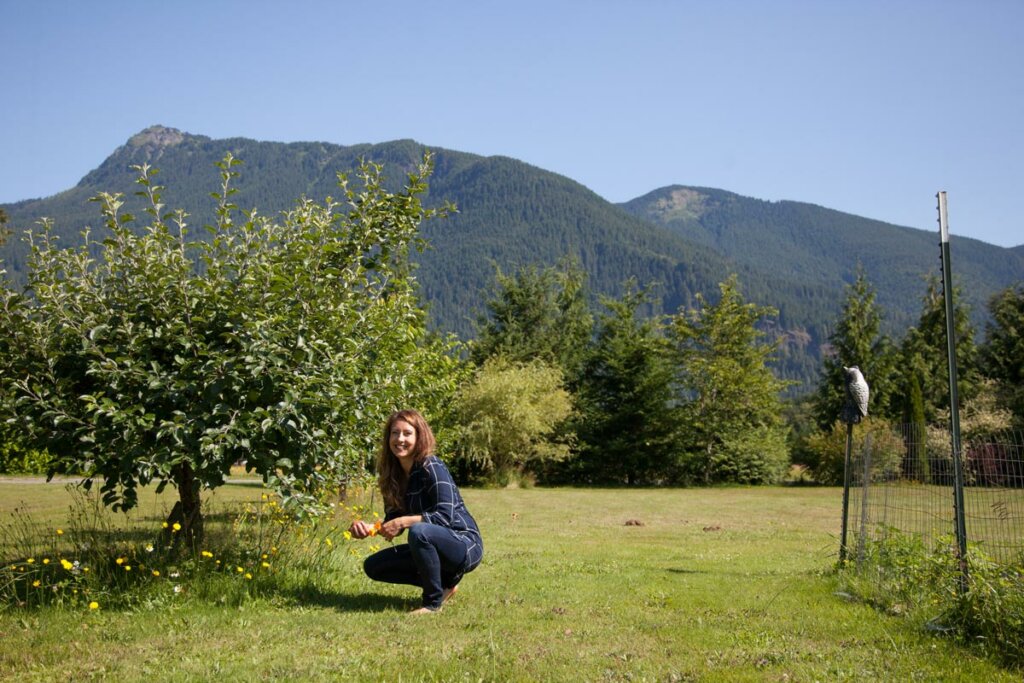
While I love my veggie garden, there is a beauty in only having to plant something once and being able to harvest if for years to come. Can I get a holler? No, sheesh, this is exciting stuff, okay, at least a high five.
Having a fruit source on your homestead is a great step towards self-sufficiency and lowering your grocery bill. Plus, there is nothing and I mean nothing, like fresh ripe fruit straight off the vine… or tree or bush. This makes jam, jelly, and syrup making almost free as well.
Growing Fruit Trees From Seed
I don't actually like to grow my fruit trees from seed, and the reason is that you're going to be adding that many more years before they being to produce fruit (usually bare-root trees or saplings you buy at a nursery are already 2-3 years old).
Another reason is that, depending upon the variety of fruit tree, when you plant them from seed, you don't always get the same variety.
So, to make sure that I'm getting the exact fruit variety that I want, I like to start with some immature, bare-root fruit trees.
When to Plant Fruit Trees
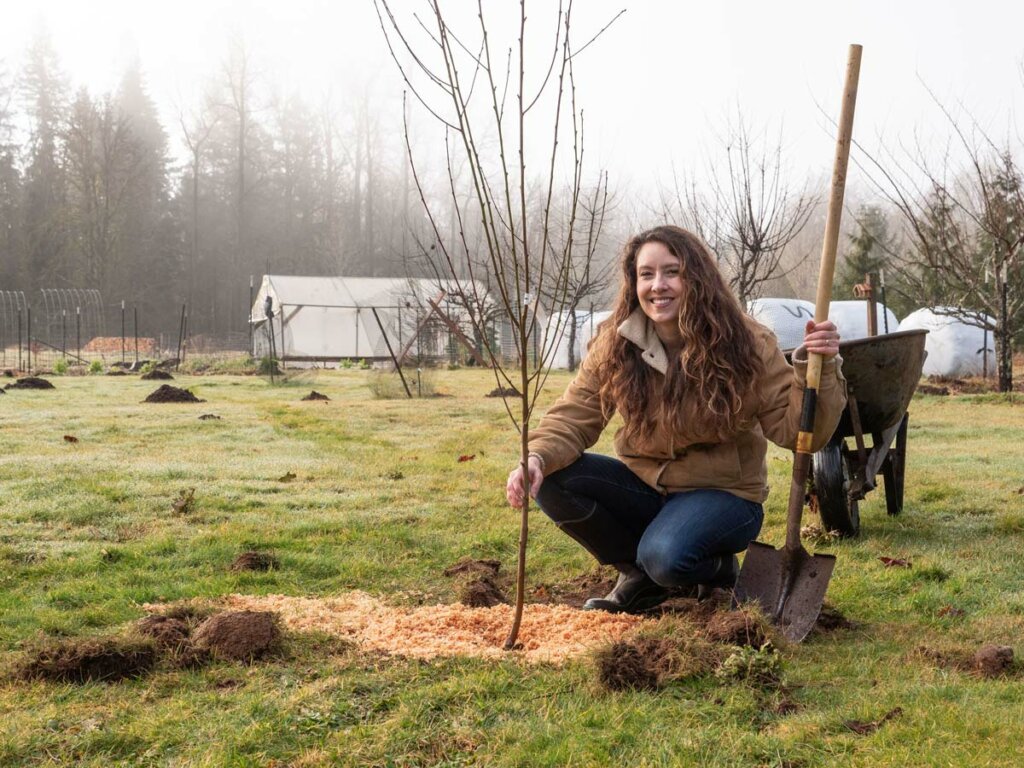
Planting in the late winter or early spring is generally the best time to get your new fruit trees in the ground. As long as the ground isn't too frozen to dig a hole, you should be good to go.
Bare root stock should be planted in winter, while raspberries and blueberries can be planted into spring.
A good rule of thumb is to check the local nursery's in your area. If they have bare root fruit trees and other fruit plants out, then it's time to begin planting. Your goal is to have the fruit tree/plant in the ground so the roots can get over the shock of transplanting and begin establishing their root system before the stress of summer and the work of growing leaves and fruit begin.
Where to Get Good Fruit Stock
You have a few options for finding good fruit stock. Your best bet is to go to a local nursery (not the garden department at big box stores but a true independent nursery). You'll be able to inspect the stock, it's most likely grown in your region (acclimated to your weather), and the varieties best suited to where you live. Many nurseries will let you schedule a meeting with an experienced staff member to pick out the best varieties based on your needs.
We don't have any local nurseries with fruit trees and my favorite online source for healthy plants is RainTreeNursery.com I've ordered both my elderberry bushes, strawberry plants, and received five fruit trees from them and all the plants are packaged excellently and have been very healthy. (Use coupon code: modernhomestead to get 10% off your order.) I've also had decent luck with fruit trees from Costco, they partner with regional nurseries/growers.
Bare root fruit trees are usually the cheapest route to go and most nurseries will have them on sale in winter, as this is the time they must be planted. Because you'll be purchasing and planting the trees before they've leafed and blossomed out, it may be harder to tell if the tree is healthy.
I look for a tree that has a good set of well-balanced limbs, a solid scaffolding in place, and no cracks or scabbing on the limbs or trunk.
If you have a friend with a good raspberry patch, ask if you can get a few canes (the viney branch part of the bush) to start your own patch. It will take a few years before your own canes need thinning, but this was how we got all of our raspberries. An overgrown patch was on my aunt's property and we transplanted an entire row in the early spring to our yard. Raspberries will also send out runners and you can dig those canes up as well.
How to Plant Fruit Trees
Digging a Hole
If you plan on moving an established fruit tree or fruit plant or planting a bare root or potted tree, be sure you dig a hole twice as wide and twice as deep. Create a cone shape of dirt in the bottom of the hole and spread the roots out and down this dirt cone (same technique in How to Plant Strawberries)
Filling the Hole
Backfill the hole with loose dirt and a layer of compost. If any of the roots are broken, remove them before planting. Keep the level of dirt at the same level it was in at the nursery. You can usually see the line on the trunk of the tree or bush.
Create a mote around the base of the tree to allow the water to filter down onto the roots instead of running off into the surrounding soil or land.
Use a small amount of water when you plant the tree. The soil will settle and you'll be able to see where you need to add more dirt.
Watering Schedule
Don't over water in the winter months. In the late spring, when the tree leaves out and the soil becomes dry, water deeply 5 to 10 gallons once a week.
Throughout the first few summers, you'll want to water the plant once a week if you don't have any rainfall. I neglected to this with one of our new apple trees and lost it. So even in the rainy Pacific Northwest, you'll still want to follow the rule of watering deeply once a week with a newly planted tree if there isn't any moisture falling from the sky.
Note: It takes an average of seven years before you'll be able to harvest a sizeable crop from your fruit trees. Most bare rootstock is a few years old, but you can ask the nursery for more specifics.
The bigger or older the stock, the more expensive it will be.
Raspberries will produce the following year (or the same year in the fall if they're an ever-bearing variety and planted in the spring) and blueberries usually take a couple of years. Learn how to plant berry bushes here.
Picking Your Variety of Fruit
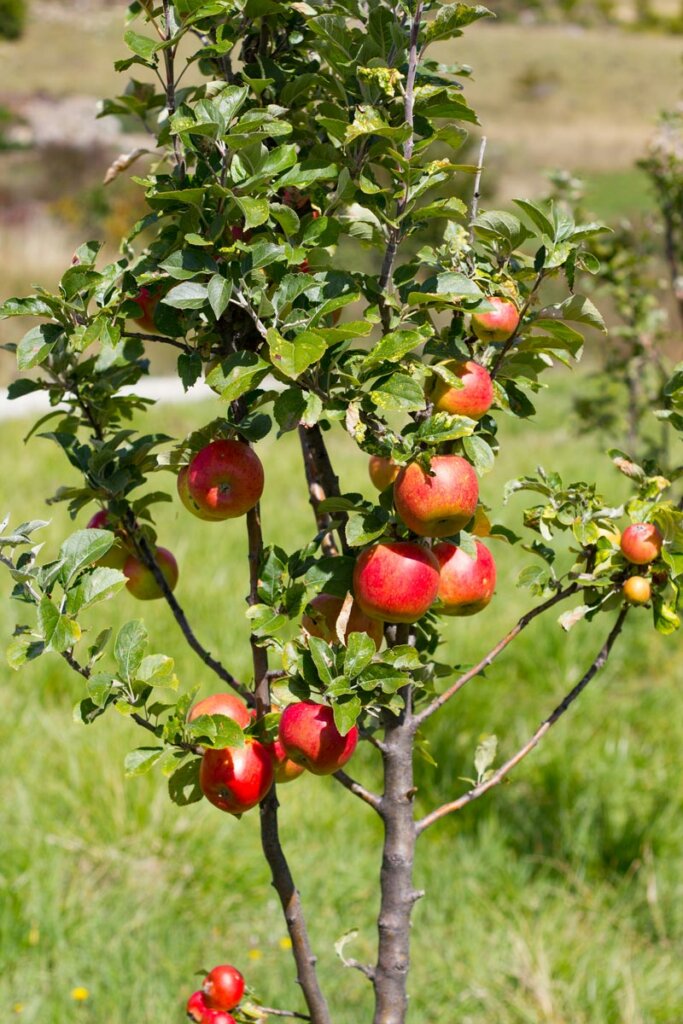
An important thing to remember when planting your fruit trees is to be sure you either pick a self-pollinating fruit tree or you purchase two varieties that will cross-pollinate. A crab apple will cross-pollinate almost all apple tree varieties as it blooms for a longer period of time than a regular apple, allowing it to pollinate early, mid, and late-season apples. Although a crab apple is so sour you'll never make the mistake of biting into one twice, it is high in natural sources of pectin and will help you get a beautiful set on your jams and jellies.
Some varieties of apples become ripe later in the season. If you live in a zone with early frosts or shorter growing seasons, you might want to pick an earlier ripening variety.
You can also purchase “fruit cocktail” trees, where several varieties have been grafted onto one stock. We haven't had much luck with these as the grafted branches tend to die off after a year or two and the main stock of the tree takes over.
Even if a fruit variety is self-pollinating, you'll get a larger harvest if a cross-pollinator is nearby.
My favorite apple is the heirloom Gravenstein, but because it's sterile (doesn't pollinate anything else) so we have a crab apple, and also a Gala and Honeycrisp.
The best fruit trees for small spaces are dwarf or semi-dwarf varieties.
Need help picking the right fruit trees for your area? Read 5 Tips to Starting an Orchard
Self-Pollinating vs. Cross-Pollinating Fruits
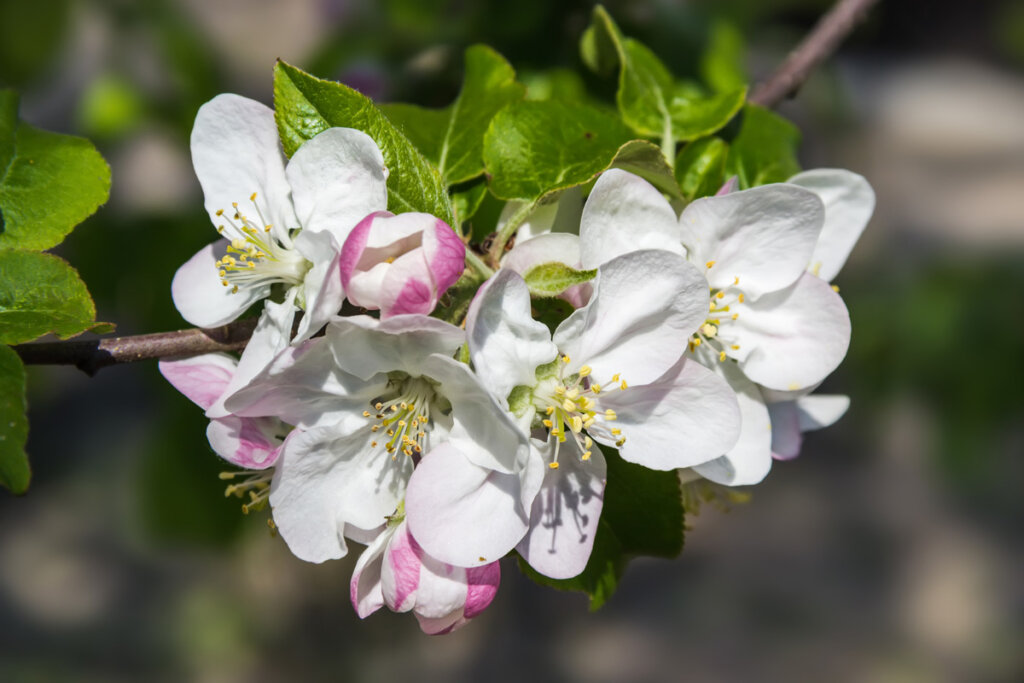
As mentioned above, you'll want to be sure whether or not your fruit tree is a self-pollinating or cross-pollinating variety. Here's a list to keep in mind, but wherever you buy your tree, you should be able to find out which variety you're purchasing.
Self-Pollinating Fruits
- Apricots
- Pomegranate
- Citrus Fruit
- Grapevines
- Persimmons
- Sour Cherries
- Blackberries
- Raspberries
- Strawberries
- European plums
Most berries and European plums will do better if they have another variety to cross-pollinate with.
Cross-Pollinating Fruits
- Apple (there are a few self-pollinating varieties like Golden Delicious, but they will do better if they have a cross-pollinator)
- Blueberries
- Elderberries
- Pears
- Japanese Plums
- Sweet Cherries
- Most nut trees
Bare Root Fruit Trees to Plant in Winter
- Apple
- Apricot
- Asian pears
- Crabapple
- Sweet Cherry
- Sour Cherry
- Pears
- Peaches
- Plums
Bonus: Use the same tips for planting Filberts or hazelnut trees.
Fruit Trees for Small Spaces
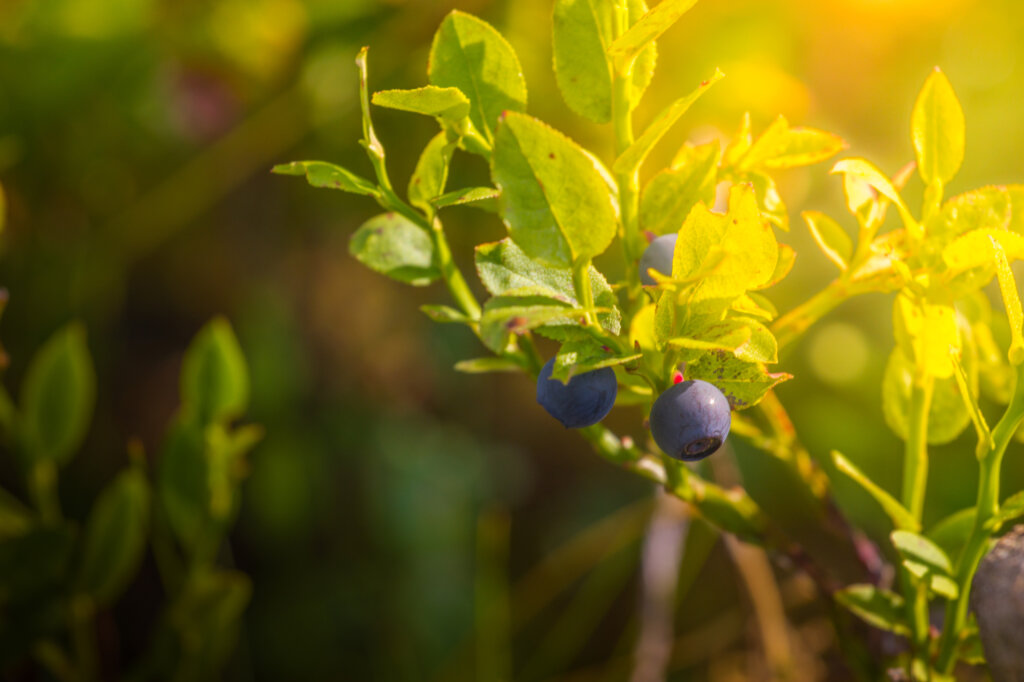
Even if you don't have a large yard or any land you can still plant fruit trees. Look for dwarf varieties. They can be grown in containers.
Berry bushes like blueberries are well suited to containers as well.
More Resources for Growing Fruit:
- 5 Tips to Starting an Orchard and Growing Fruit
- How Many Fruit & Berry Plants Per Person to Plant
- How to Prune an Apple Tree in Winter
- How to Treat Fruit Trees Organically: When to Spray for Disease
- How to Care for Fruit Trees in the Fall & Winter
- Planting a Fruit Tree Guild
- Pruning Blueberry Bushes
- How to Prune Raspberries
What kind of fruit do you grow? Do you have a favorite variety or tips to share?
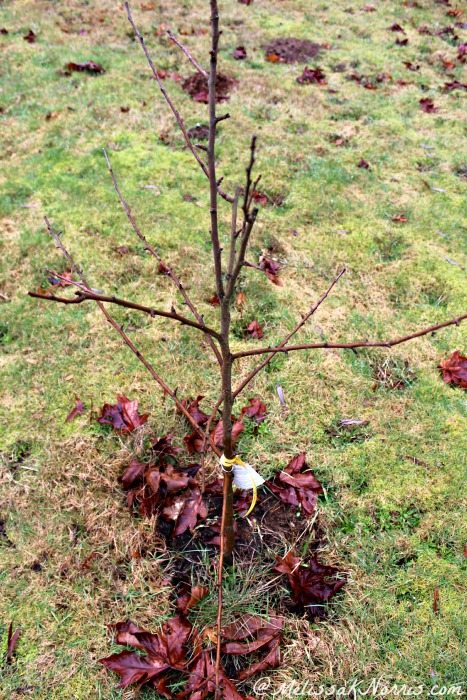
No comments:
Post a Comment